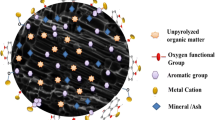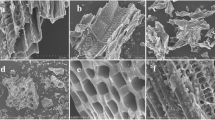Abstract
As an alternative to montmorillonite clay, three local Zambian clays have been used to bleach soybean oil. The bleaching action of the natural clays was poor when compared with commercial acid-activated montmorillonite (M-C) and activated charcoal (A-C) adsorbents. However, acid-activation of the Zambian clays profoundly increased their adsorptive activity. Reduction of 88% in soybean oil color (Lovibond Red) by each of the three activated Zambian clay samples represented an efficiency close to that of montmorillonite (94%) and better than activated charcoal (63%). Peroxide value (PV) of the oil was reduced by 85% (M-C) and 78% (A-C) while 68% was the highest reduction for the activated Zambian clays. After 12 wk of storage at ambient temperature, the bleached soybean oil samples showed some oxidation. Consideration of the totox values indicated that the Zambian clay-bleached oil was more stable over this length of storage when compared with the M-C bleached oil. The bleaching action shown by aluminum-exchanged clays was closely related to their acid-activated counterparts. These results demonstrate a dependency of adsorptive bleaching with Zambian clays on proton availability. Comparative powder x-ray diffraction analysis of the clays showed that quartz was the major mineral present, followed by kaolinite. No montmorillonite was detected. It was concluded that by appropriate treatment to generate Brönsted acidity (protons), Zambian clays can be converted into potent adsorbents for soybean oil impurities.
Similar content being viewed by others
References
Brown, H.G., and H.E. Snyder,J. Am. Oil Chem. Soc. 62:753 (1985).
Proctor, A., and H.E. Snyder, Ibid.:1163 (1987).
Lai, M.-T., W.-M. Lin, Y.-H. Chu, S-L.Y. Chen, K.-S. Kong and C.-W. Chen, Ibid.:565 (1989).
Chu, Y.-H., and W.-M. Lin, Ibid.:368 (1990).
Boki, K., S. Shinoda, M. Abe and S. Shimizu, Ibid.:373 (1990).
Gunstone, F., and F.A. Norris, inLipids and Foods: Chemistry, Biochemistry and Technology, Pergamon Press, New York, NY, 1982, pp. 58–61.
Wiedermann, L.H.,J. Am. Oil Chem. Soc. 58:158 (1981).
Fahn, R., Acid-activated Clays and Their Adsorption Properties, Lecture—Society of Mining Engineers, Littleton, Colorado, 1979, pp. 79–328.
Morgan, D.A., D.B. Shaw, M.J. Sidebottom, T.C. Soon and R.S. Taylor,J. Am. Oil Chem. Soc. 62:293 (1985).
Taylor, D.R., D.B. Jenkins and C.B. Ungermann, Ibid.:334 (1989).
Nkpa, N.N., T.A. Arowolo and H.J. Akpan, Ibid.:218 (1989).
Proctor, A., and S. Palaniappan, Ibid.:618 (1989),
Proctor, A., Ibid.:576 (1990).
Nihal, S., and G. Guler, Ibid.:917 (1989).
Yariv, S., L. Heller and Z. Sofer,Israel. J. Chem. 6:741 (1968).
IUPAC Standard Method 2.504 for p-AV, Pergamon, Oxford, U.K. 1987.
Egan, H., R.S. Kirk and R. Sawyer, inPearson’s Chemical Analysis of Food, Churchill Livingstone, New York, NY, 1982, pp. 58–61.
Official and Tentative Methods of the American Oil Chemists’ Society, edited by David Firestone, American Oil Chemists’ Society, Champaign, IL, 1990, Method Ce-1b-89.
Molak, B., inAn Investigation of Ceramic and Refractory Clays at Solwezi, Geological Survey of Zambia, Lusaka, Zambia, 1979, pp. 81–87.
Jones, W., J.M. Thomas, D.T.B. Tennakoon, R. Schlogl and P. Diddams, inCatalyst Characterization Science, edited by M.L. Deviney, and J.L. Gland, American Chemical Society, Washington, DC, 1985, pp. 472–475.
Greenwood, N.N., and A. Earnshaw, inChemistry of the Elements, Pergamon Press, New York, NY, 1984, pp. 393–397.
Kashima, M., Cha Ga-S., Y. Isoda, J. Hirano and T. Miyazawa,J. Am. Oil Chem. Soc. 68:119 (1991).
Author information
Authors and Affiliations
About this article
Cite this article
Habile, M., Barlow, P.J. & Hole, M. Adsorptive bleaching of soybean oil with non-montmorillonite Zambian clays. J Am Oil Chem Soc 69, 379–383 (1992). https://doi.org/10.1007/BF02636072
Received:
Accepted:
Issue Date:
DOI: https://doi.org/10.1007/BF02636072




